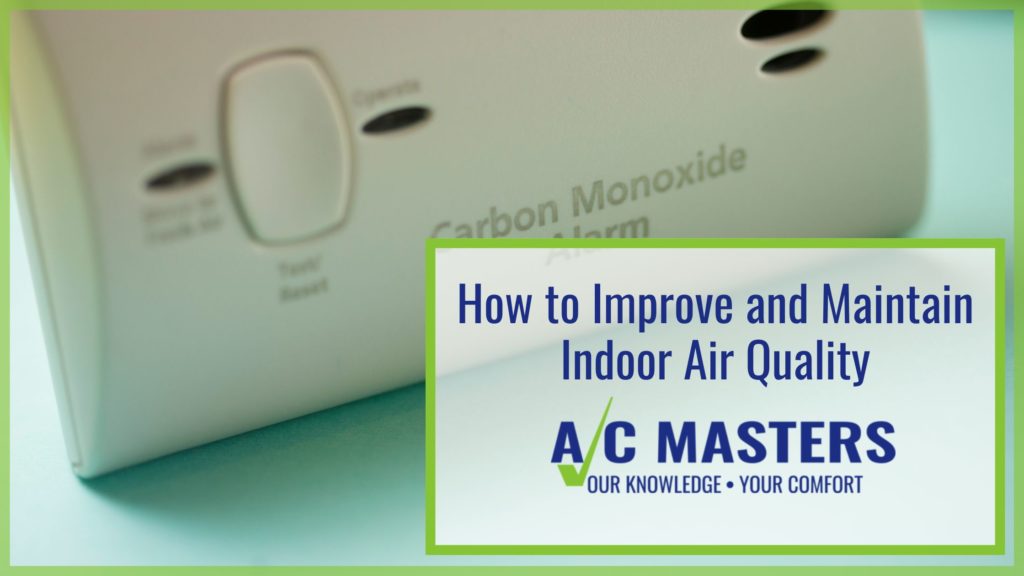How to Improve and Maintain Indoor Air Quality (IAQ)
Indoor Air Quality, otherwise known as IAQ, refers to the air quality within your home that you, your family, and your pets breathe on a daily basis. Many associate worsening air quality with outside pollutants, but indoor pollutants can be just as dangerous!
Potential Pollutants & How to Combat Them:
- VOCs – Volatile Organic Compounds known as VOCs are groups of chemicals present in many household products like cleaning solutions, paint, adhesives, air fresheners, and more. Exposure for a few hours could cause headache, dizziness, and nausea.
- First and foremost, carefully read and follow label directions and precautions when dealing with any chemicals!
- Ventilation will help combat these pollutants. Make sure the air in your home is ventilated adequately. Fresh air helps reduce the amount of VOCs in the air. Keeping a few windows open and a fan going will help circulate the air when you’re working with paint, adhesives, cleaning supplies, and other items with concentrated chemicals.
- Biological pollutants – These include bacterias and mold, dust, bugs, pollen, and pet dander. This can contribute to a rise in allergy symptoms, cause or worsen asthma, and even lead to dizziness or fatigue.
- Take action against biological pollutants by keeping the humidity levels in your home in check. Warm and damp areas are breeding grounds for biological pollutants such as mold, bacteria, and dust mites.
- Humidity levels of 30-50% are typically recommended for homes. If you notice a musty smell or stale air in your home, it would be best to have a professional check it out sooner rather than later.
- Read more about natural ways to regulate the humidity levels of your home here.
- Carbon monoxide (CO) – A colorless, odorless, and tasteless gas. Low exposure to carbon monoxide can cause fatigue for those in good health whereas high exposure could cause vision and coordination issues, headaches, confusion, serious illness, or even death. The U.S. Consumer Product Safety Commission recommends each home have a carbon monoxide alarm.
- This gas can be produced by improperly working furnaces, portable generators, water heaters, fireplaces, and more. It’s important to have appliances correctly installed, maintained frequently, and inspected for any issues.
- Check out the CO alarm requirements in your state.
Concerned about your indoor air quality or want to maintain great air in your home? Contact the professionals at A/C Masters to discuss your current HVAC system and options.

